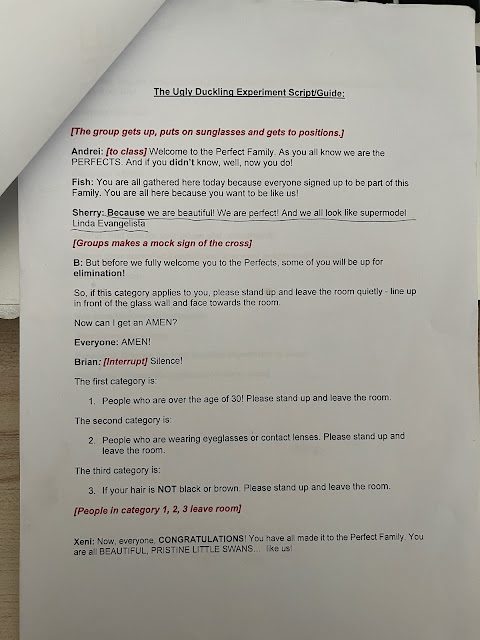Narrative, Myth, Belief
“[Propaganda creates] a false inner model of reality which the individual can carry around… and apply to every experience. Being integrated with their personality, this model is a logic-tight structure. Facts can never penetrate it…” [John Sladek, The New Apocrypha, Granada, 1978, p. 306]
INTRODUCTION
This project invites you to experiment with the ways in which complex ideas about identity,
culture, science, technology, politics and other concepts are translated into narratives. It is also
designed to introduce you to the process of making the intangible tangible: in other words,
using artefacts, events or processes to communicate and interrogate complex ideas. This will
prepare you for the task of testing your own ideas and research questions through external
intervention - a technique which is crucial to Units Two and Three of the MAAI course.
People everywhere articulate and share their identities in narrative form, in processes that are
older than recorded history. Some stories occur so frequently that they have become myths -
and can be re-told again and again in different formats, and to different audiences. Some myths
are old – and some are new. New myths are sometimes referred to as “Urban Myths”, to
distinguish them from traditional myths. New myths are being created all the time, and in our
accelerated digital culture, new myths can spread very rapidly.
Myth is a key mechanism through which our cultures give themselves both depth and
resonance. Old myths survive because they embody compelling narratives that seem to make
sense of aspects of our complex lived experiences. Myths have magical properties. They are
accessible to everyone, and yet their meaning never seems to be finally or definitively
determined. Products, services, organizations, institutions, professions, regions, countries,
prominent historical figures and contemporary individuals can all have myths woven around
them. Myths can therefore help us understand and appreciate how deliberate interventions
can alter people’s view of the world.
MY FINAL WORK
Close examination and dissection of the resource material helped us to identify a common denominator: white Western culture positioning itself as the dominant culture, and anyone else who does not conform to its fixed standards of beauty. The elongated shadow of a giant tries to silence the voices it does not want to hear - arguably, it is a carefully crafted and constructed illusion.
We focus primarily on the LGBTQI+ community and how particular power dynamics can lead to the exclusion of some of its members because of the color of their skin or even their gender (transphobia). Pride, for example, is supposed to be the moment when every member of the community comes together to celebrate how far the movement has come since the Stonewall riots. However, George Johnson observes that it has now become a time to whitewash the past and the present.
We gathered that even in a community considered to be the epitome of inclusivity, there have been many 'ugly ducklings' - a place that provides a safe haven for people, regardless of gender or race. Instead, many members of the LGBTQI community have been alienated, viciously leading to self-alienation.
XIEYU CHEN (Sherry):
I also want to share an interesting point of view: some people think that the fairy tale of the ugly duckling is desperate, because the ugly duckling can finally become a swan because it was originally a swan, and if you are a duck, you can't become a swan no matter how hard you try.
I think the phenomenon that some people get the view of blood supremacy from the afterthought of this fairy tale is also worth discussing. It is precise because of the values of such people that even the birds are distinguished by their bloodlines and that swans are nobler than ducks. This discriminatory concept has led to the interpretation of the so-called black fairy tale. I think we can move on from this point to our final theme of sublimation to humans - fighting discrimination and respecting those who are different from you.
In fact, this fairy tale is only about "different", not about high or low. The swan eggs hatch in the duck's nest, just to express a kind of "individuals who are different from those around them appear in the group and have a difficult life." It does not mean that "a noble individual has been reduced to the secular world" although the latter interpretation is not without it, it is not the core of its story that should be discovered. The final ending of the story is also to show that the individual has found their place in the dimension that suits it, and has gotten rid of the predicament of being not understood by other individuals.
A word may have a great image deviation in different languages. If you want to get rid of human stereotyped values and understand the logic of its story, it will be easier to understand if you replace the swan with the ostrich: A huge and ugly egg appeared in the duck's nest, and the hatched cubs were just as ugly as this egg and could not swim, so they were discriminated against since childhood. One day, it grows up and realizes that it is actually an ostrich, and the duck's way does not apply to it. Ostrich can run fast, and duck can swim, this is just "different" and will not be misinterpreted as high or low.
The effect of the replacement of this word will make the audience reflect more on whether their own values are discriminatory.
When we read this fairy tale, we also subconsciously think that swans are nobler than ducks. Why do human beings like to distinguish high and low from animals, and even everything in their thinking?
How this discriminatory thinking and labeling thinking came into being, how should we change this situation, and further thinking about it, I think will be more supportive of our arguments.




